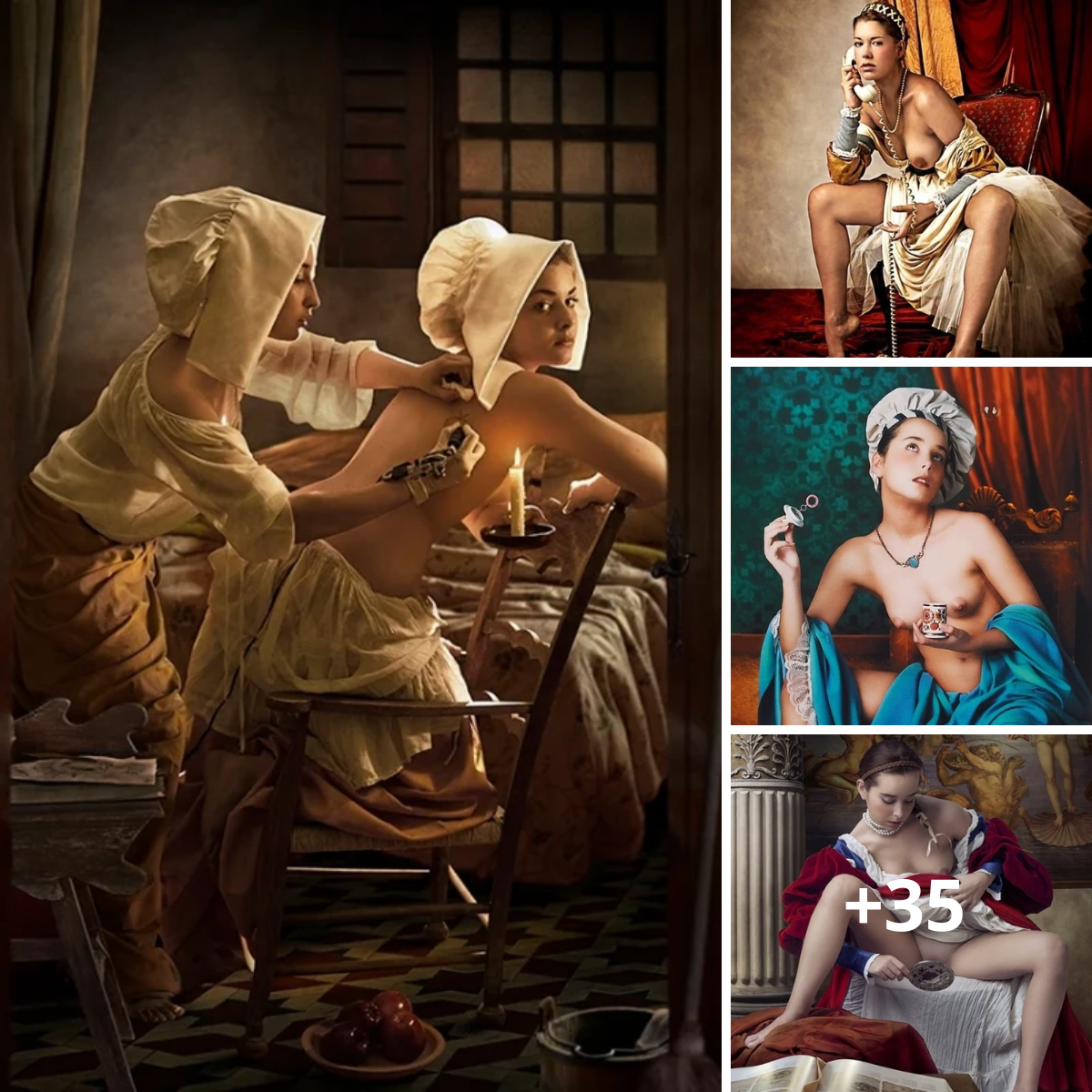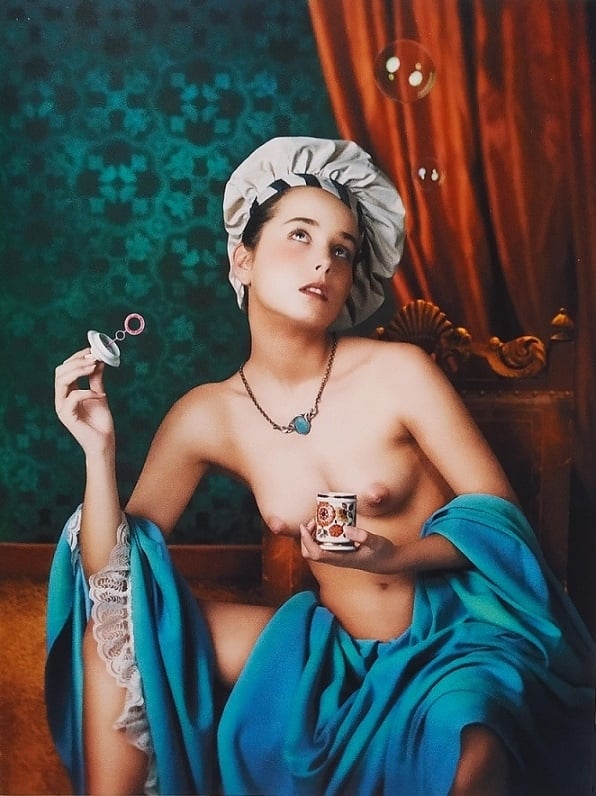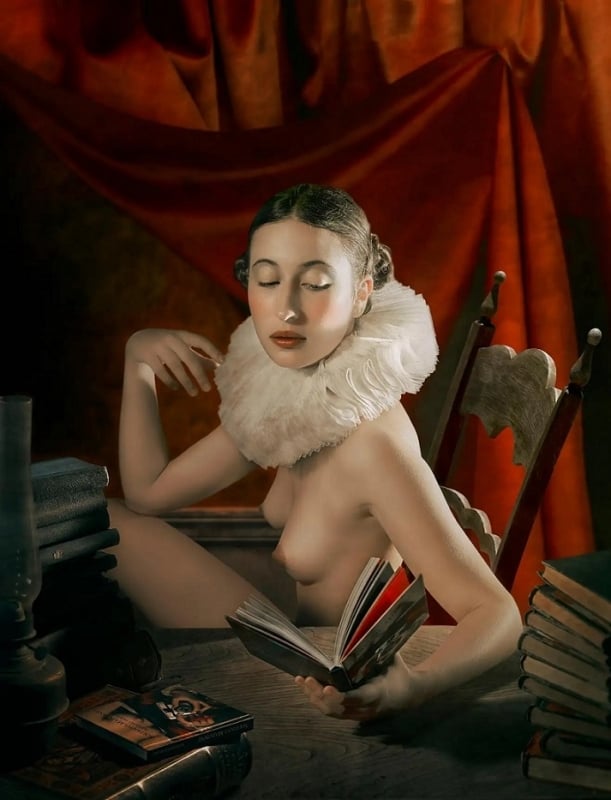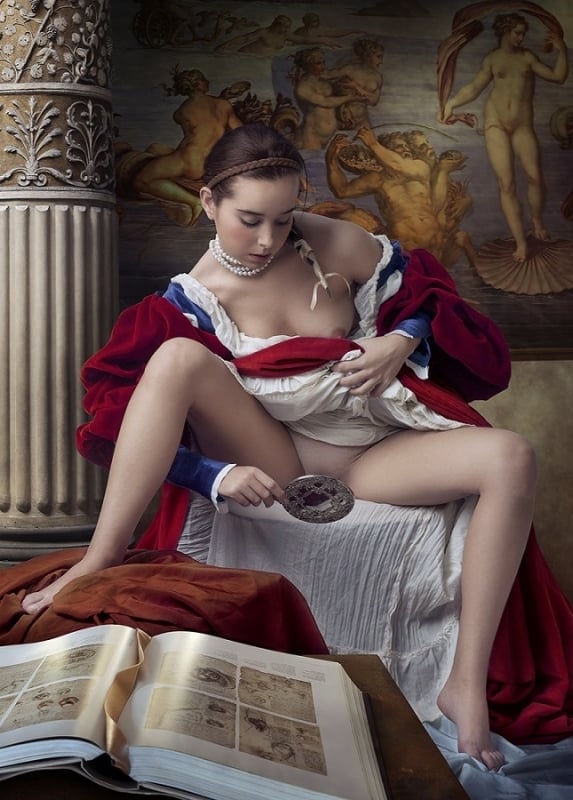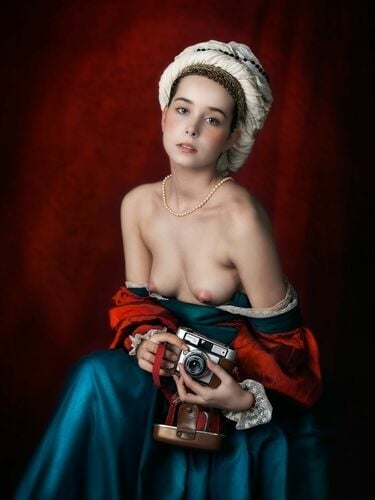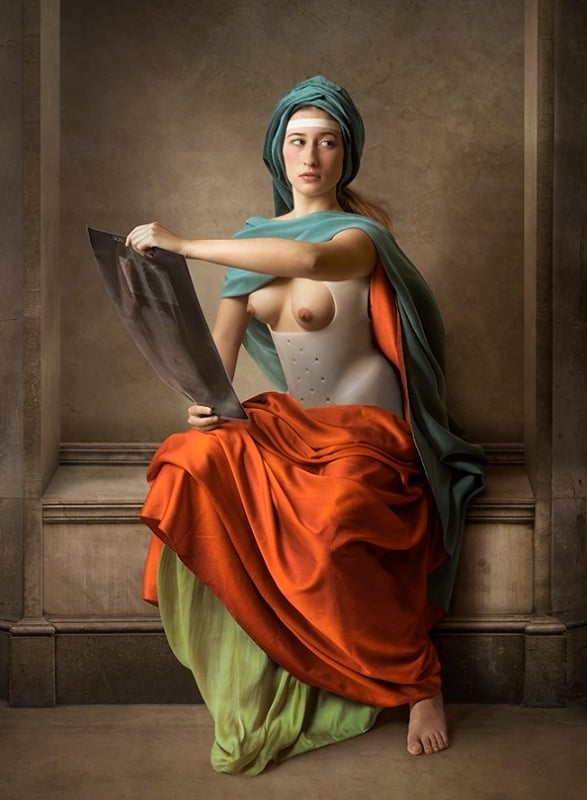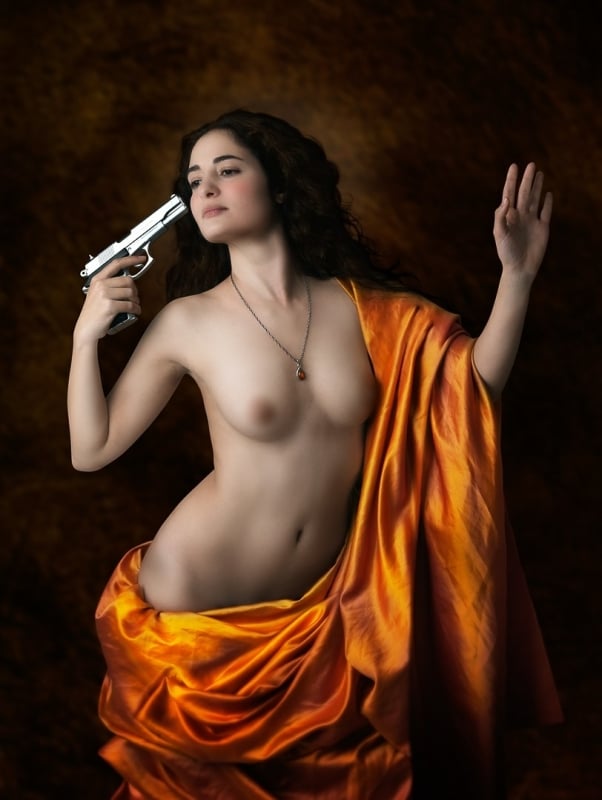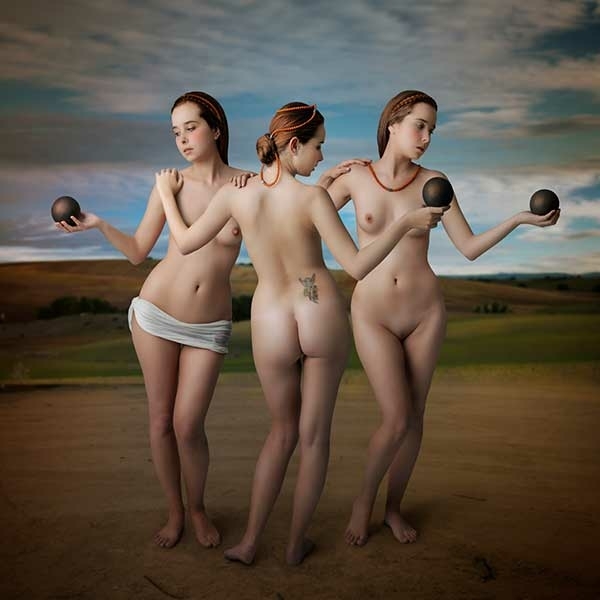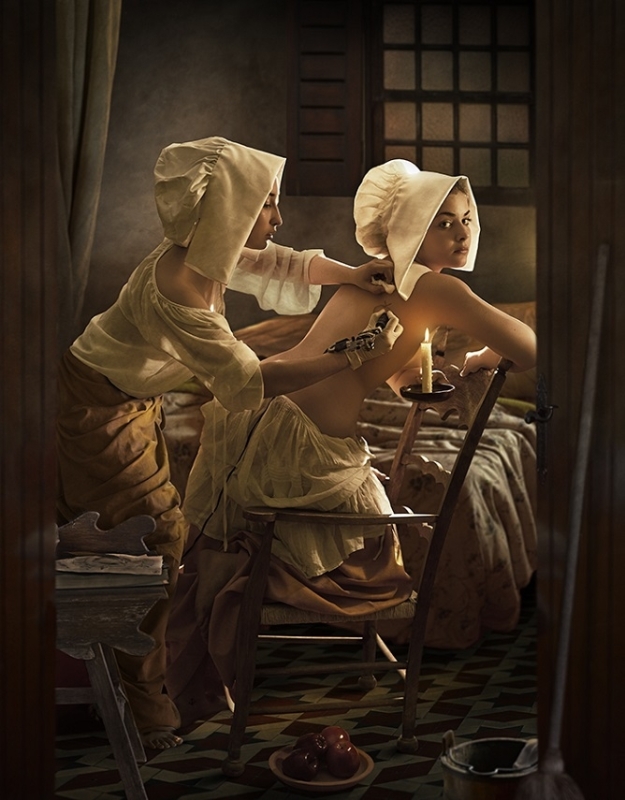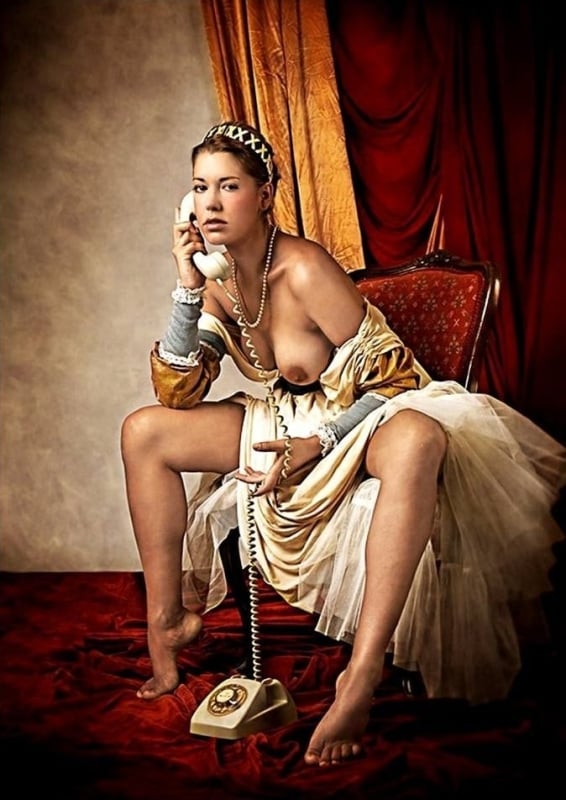The photographer Mariano Vargas was born in 1964 in San Fernando, Cadiz, Spain. He grew up in this small town in southern Spain in a Catholic family, which undoubtedly caused him to be very curious about feminine mysteries from a very young age.
White Skin
He hid in his paternal grandfather’s library and looked at the art books on the shelves, overwhelmed by shame but attracted to the naked women with their white skin, their poses, their expressions.
Fig.1. ‘Young woman with soap bubbles‘ (2009)
Birth of Venus
Vargas developed a strong fascination for Botticelli’s Birth of Venus
This is the third time that the Swedish Senju Shunga (1968) pays tribute to a classic work of art. Recently he finished a melancholic rendition of John Everett Millais’ Ophelia and a couple of years ago it was.. when he discovered it in one of the books, and soon after found his mother standing naked on a white towel in the bathroom.Though her figure did not match Simonetta’s, and lacked the great hair and white skin, she still brought to mind the Venus, especially when, surprised, she tried to cover her exposed womanhood, while ordering him to close the door immediately. From that moment on, the image of that chubby little Venus and the decision of capturing the beauty of naked woman stuck with him. even while he worked for agencies, publishers, and record labels.
Fig.2. ‘Reading‘ (2018)
Tribute to Femininity
Initially, Vargas worked as a painter, uniting Victorian and modern aesthetic of women taken from his head. Then on his 20th birthday he got a camera and started shooting girls from the street, and then painting them. Over time, the photographic process took on an increasingly dominant role, in which each photo became a tribute to femininity.
Fig.3. ‘Young woman with mirror ‘
Conscious Eroticism
The mission of the driven photographer is to captivate the spectator, both through his senses and intellect. In The New Erotic Photography (Taschen) he explains, ‘The eroticism in my photos is a conscious eroticism, connected to growth and self-esteem rather than just sexuality. It is the function of images to produce emotions; if an erotic photograph doesn’t excite us, it does not work.’
Fig.4. ‘Lady with camera‘
Fig.5. ‘X-ray ‘
Fig.6. ‘Lucrecia‘
Fig.7. ‘Gracias‘ (2009)
Fig.8. ‘Marina and Mimi II – tattoo
Depictions with tattoos in ukiyo-e shunga appear since the mid-eighteenth century but not in earlier hand-painted works. The men wearing tattoos represented the underworld of criminal gangs ( yakuza ) and highway..‘
Fig.9. ‘Lady with ‘
Fig.10. ‘Lady portrait with phone‘ (2011)
